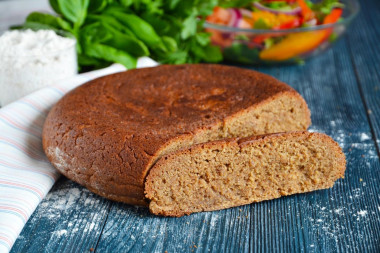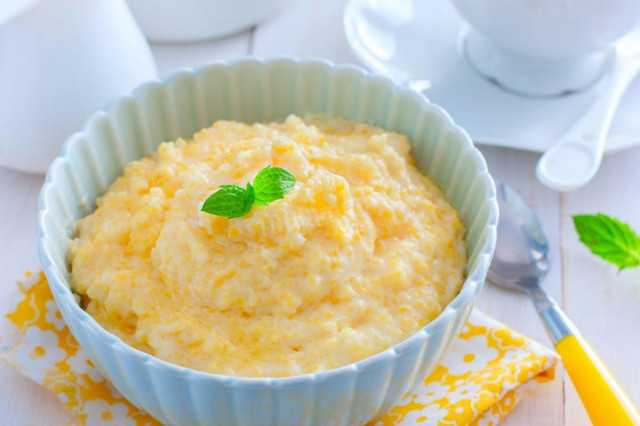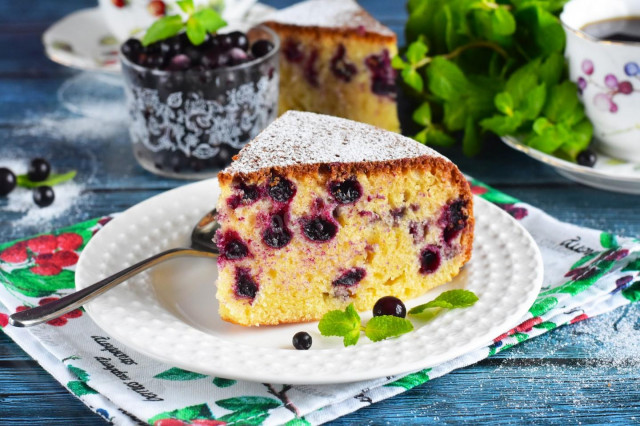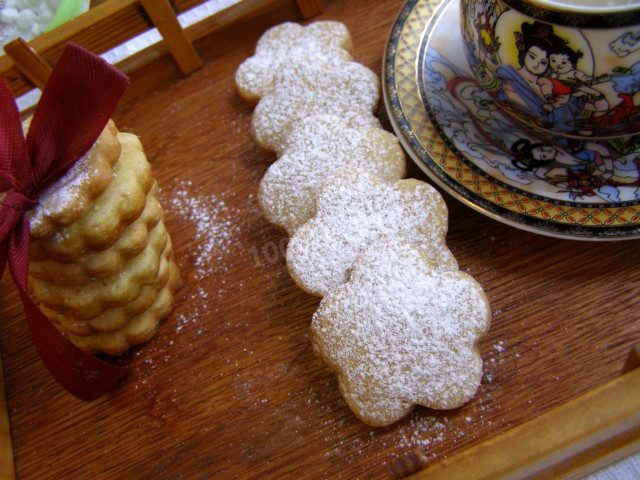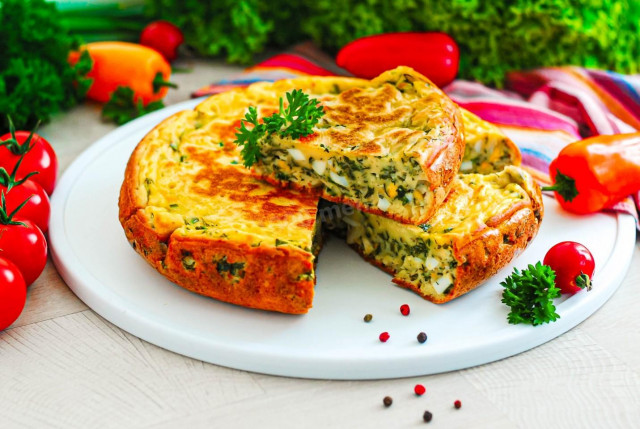Composition / ingredients
Step-by-step cooking
Step 1:
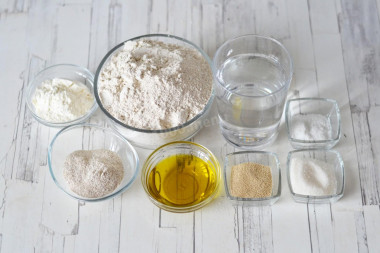
How to bake rye flour bread in a slow cooker? First, prepare the necessary ingredients according to the list. Use wheat flour of the highest grade. Instead of olive oil, you can use any other vegetable oil to taste. You can not add malt at all, leaving the amount of water and flour the same as in the recipe (500 g of rye, 50 g of wheat and 400 ml of water).
Step 2:

Malt pour 100 ml of boiling water, stir and cool to room temperature. I have dry rye malt in the form of a powder that needs to be diluted with water. In this case, the amount of water spent on brewing malt is subtracted from the total amount of liquid.
Step 3:
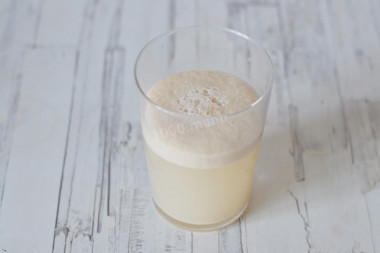
Heat the rest of the water to 37-40°C and dissolve 1 tbsp of sugar in it. Pour in the yeast and leave until a fluffy cap appears. This means that the yeast is working and can be cooked further. If the caps do not appear, then the yeast is of poor quality and the bread will not rise with them.
Step 4:

Sift rye and wheat flour into a bowl with a slide. It is necessary to sift rye flour not only to saturate it with oxygen, but also to cut off larger particles that will remain at the bottom of the sieve. Make a recess in the center.
Step 5:
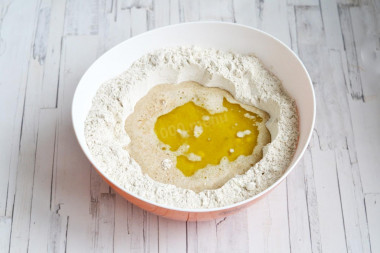
Pour the yeast mixture, cooled malt and vegetable oil into the recess. Add the remaining sugar and salt.
Step 6:

Knead a viscous homogeneous dough. If the dough sticks to your hands very much, lightly lubricate them with vegetable oil. You can add a little wheat or rye flour (since flour can be different and absorb moisture in different ways). But in any case, try not to clog the dough with flour, otherwise the bread will turn out too dense.
Step 7:
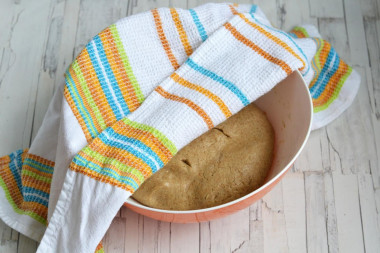
Cover the bowl with the dough with a towel and leave to melt in the heat for 1 hour.
Step 8:
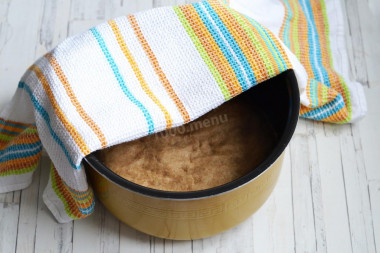
Knead the dough well and roll it into a ball. Put the dough in the bowl of a slow cooker and leave it under a towel for another 30 minutes to rise.
Step 9:

If desired, you can put the bowl in the multivark on the Multi-cooker mode or any other where it is possible to turn on the temperature of 30-35 degrees. Leave the dough to rise with the lid closed for 30 minutes.
Step 10:

When the dough is suitable, you can proceed directly to baking bread.
Step 11:

Bake rye bread on the "Baking" mode for 1 hour (look at your slow cooker).
Step 12:

Since the top of the bread is baked worse in the slow cooker than in the oven, the bread needs to be turned over. After the beep, gently flip the bread to the other side. It is convenient to do this with a steamed dish bowl.
Step 13:

Bake the bread for about 20 minutes on the same mode. To make it work the first time, it is advisable to know your slow cooker well - you may need more or less time for baking.
Step 14:
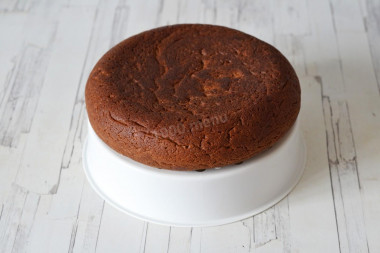
Leave the finished bread in the closed slow cooker for another 30 minutes. And then carefully remove and finally cool in a bowl with holes.
Step 15:
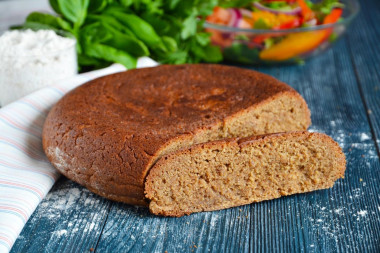
Delicious rye bread is ready. Enjoy your meal!
Be prepared for the fact that flour may need more or less than indicated in the recipe. Focus not on the amount of flour, but on the desired consistency of the dough. To avoid mistakes, read about flour and its properties!
Keep in mind that the cooking time and mode are indicated approximately in the recipe. All slow cookers work differently and even the same models of the same manufacturer may have their own characteristics. Before you start cooking a new dish for you in a slow cooker, carefully study the instructions for it, and then in practice try to cook dishes that are familiar to you first, and then new ones, choosing the mode and time individually for your own technique.
Important! Using dry yeast, it should be borne in mind that they occur in two forms: active and instant (read the instructions carefully before use!).
Active dry yeast looks like beads or small balls. Before applying them, they must be brought out of the "sleep mode". To do this, the active yeast is diluted in warm sweet water, milk or whey. The resulting bubbles, foam or "cap" indicate that the yeast is ready for further use. Active dry yeast must be brought to complete dissolution in the liquid, otherwise, due to the remaining grains, the dough may not rise and the baking will be spoiled (yeast grains that have not dissolved in the liquid and got into the dough will no longer disperse on their own, which means they will not work).
Instant dry yeast is easier to use. They do not need to be activated before use. Such yeast, along with other ingredients, is simply added to the dough. As a result, the baking time is reduced.
It should also be remembered that both types of dry yeast may differ in their activity from different manufacturers.
Caloric content of the products possible in the composition of the dish
- Granulated sugar - 398 kcal/100g
- Sugar - 398 kcal/100g
- Salt - 0 kcal/100g
- Water - 0 kcal/100g
- Wheat flour - 325 kcal/100g
- Olive oil - 913 kcal/100g
- Rye flour - 305 kcal/100g
- Malt - 361 kcal/100g
- Dry yeast - 410 kcal/100g


